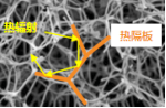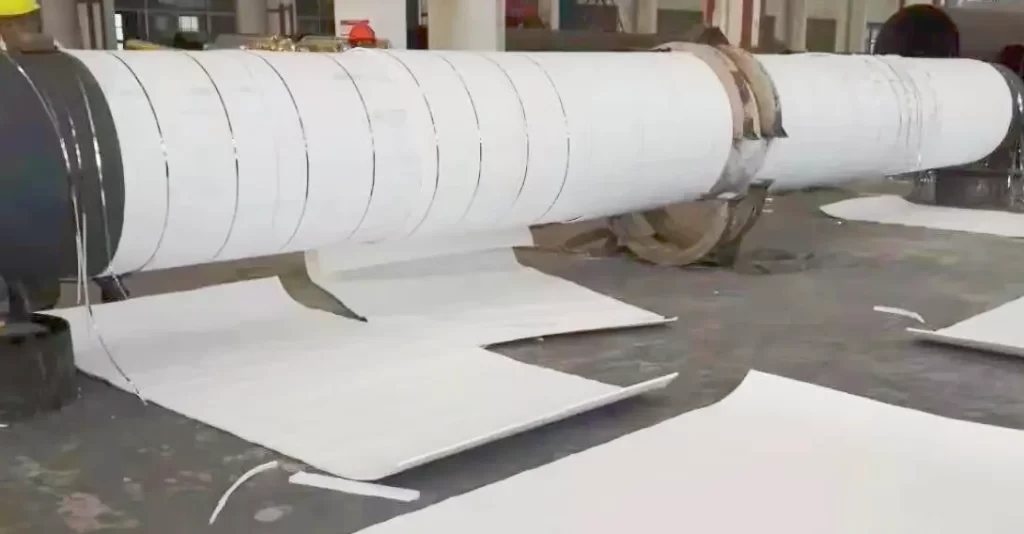About Aerogels, Here's What You Want to Know
What is an Aerogel?
Aerogel is a three-dimensional continuous porous material composed of nano-sized pores and a nano-framework. Its unique structure grants it unparalleled properties compared to conventional materials, with the most notable being an extremely low thermal conductivity.




Aerogel pore size (20-50nm)
Aerogel Microstructure
Different insulation materials’ thermal conductivity
Aerogel Insulation Principle

“Infinite Length Path” Effect:
The mesh-like framework of aerogel infinitely extends the heat conduction path, making it difficult for heat to be conducted at the gas-solid interface.

“Zero Convection” Effect:
The pore size of aerogel (20-50nm) is smaller than the mean free path of air (70nm), preventing internal air from freely flowing.

“Infinite Thermal Barrier” Effect:
The network framework of aerogel creates an “infinite thermal barrier effect,” providing shielding against thermal radiation.

Aerogel Composite Materials

By combining nano-sized aerogel with base materials like glass fiber, ceramic fiber, etc., the excellent performance of aerogel is seamlessly integrated with flexible substrates. This maximizes the lightweight and insulation properties of aerogel, while imparting flexibility and toughness. It possesses additional characteristics such as ultra-long service life, superlative insulation performance, high fire resistance, and exceptional mechanical properties, widely applied in fields like aerospace, thermal power networks, petrochemicals, new energy vehicles, rail transit, consumer electronics, textiles, and more.
Application Example
For industrial pipeline and equipment insulation, compared to traditional insulation cotton solutions, aerogel offers features of safety, environmental friendliness, energy efficiency, and high effectiveness.
Taking a certain medium-high temperature industrial steam pipeline as an example, it is overhead-laid with a steam temperature of 465°C, pressure of 5.3Mpa, flow rate of 60t/h, and diameter of DN250. The original insulation was 150mm of alumino-silicate. The insulation effect comparison with aerogel insulation blanket is as follows:

Taking a certain medium-high temperature industrial steam pipeline as an example, it is overhead-laid with a steam temperature of 465°C, pressure of 5.3Mpa, flow rate of 60t/h, and diameter of DN250. The original insulation was 150mm of alumino-silicate. The insulation effect comparison with aerogel insulation blanket is as follows:
Compared to the thermal loss with 150mm of alumino-silicate, the energy-saving rate using the aerogel solution can exceed 40%.

In the comparison calculation of the two schemes, relative to the alumino-silicate scheme, calculated per kilometer of pipe length, the annual energy-saving amount and benefits of the aerogel scheme are as follows:

*Calculated based on a constant 8000h operation, with a heat price of 70 RMB/GJ.


Due to its long service life and high efficiency, aerogel materials can create greater economic value for customers over a longer time period. Calculated based on the effective service life of alumino-silicate being 3 years, and the effective service life of aerogel blanket being 15 years: over 15 years, using aerogel insulation blanket reduces the number of installations by 4 compared to using alumino-silicate blankets. The total investment in aerogel insulation blankets is approximately 55% less than that in traditional materials. Thes results in an average annual savings of 91,770 RMB in material and construction costs. Using aerogel blanket instead of alumino-silicate yields an annual profit of 362,150 yuan, and the additional investment in using aerogel blanket can be recouped in 1.7 years. During the service life of aerogel materials (15 years in this example), using aerogel insulation materials on pipelines can accumulate approximately 4.81659 million RMB(362,150 RMB*13.3years≈4.81659 million RMB) in additional economic benefits for users.
Considering the entire lifecycle of aerogel materials, the aerogel solution reduces the number of maintenance and replacement cycles compared to traditional insulation cotton solutions, thus reducing the operational and maintenance costs of pipeline insulation. Additionally, it achieves energy savings, creating greater economic benefits for customers and significantly reducing the operational management costs for businesses.


Furthermore, due to the unique hydrophobic and breathable properties of aerogel materials, it maximizes the prevention of corrosion under insulation (CUI).
Aerogel insulation blankets are the most ideal insulation materials for industrial pipeline insulation, tank insulation, automotive fire protection and insulation, and building insulation, among other fields.

